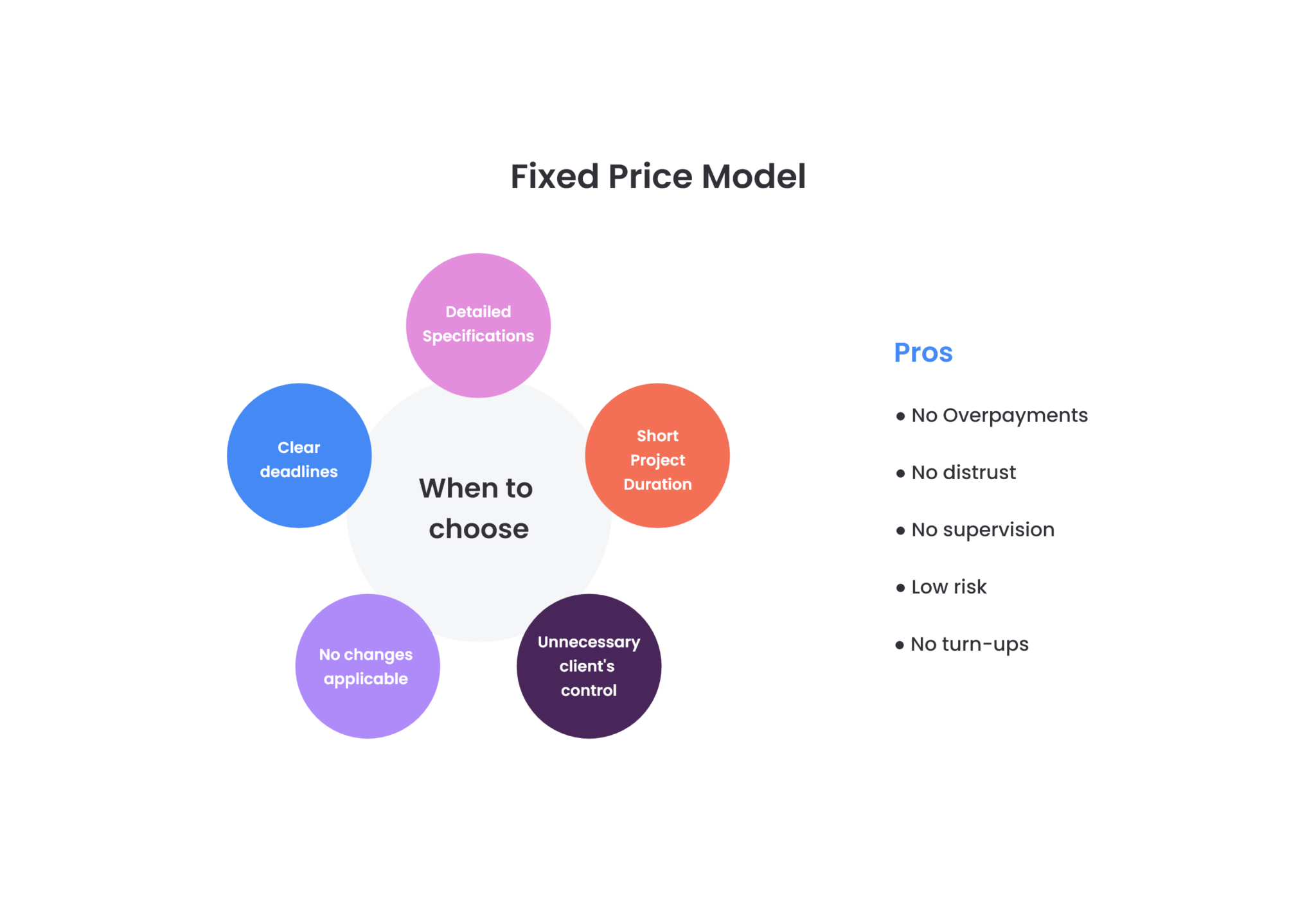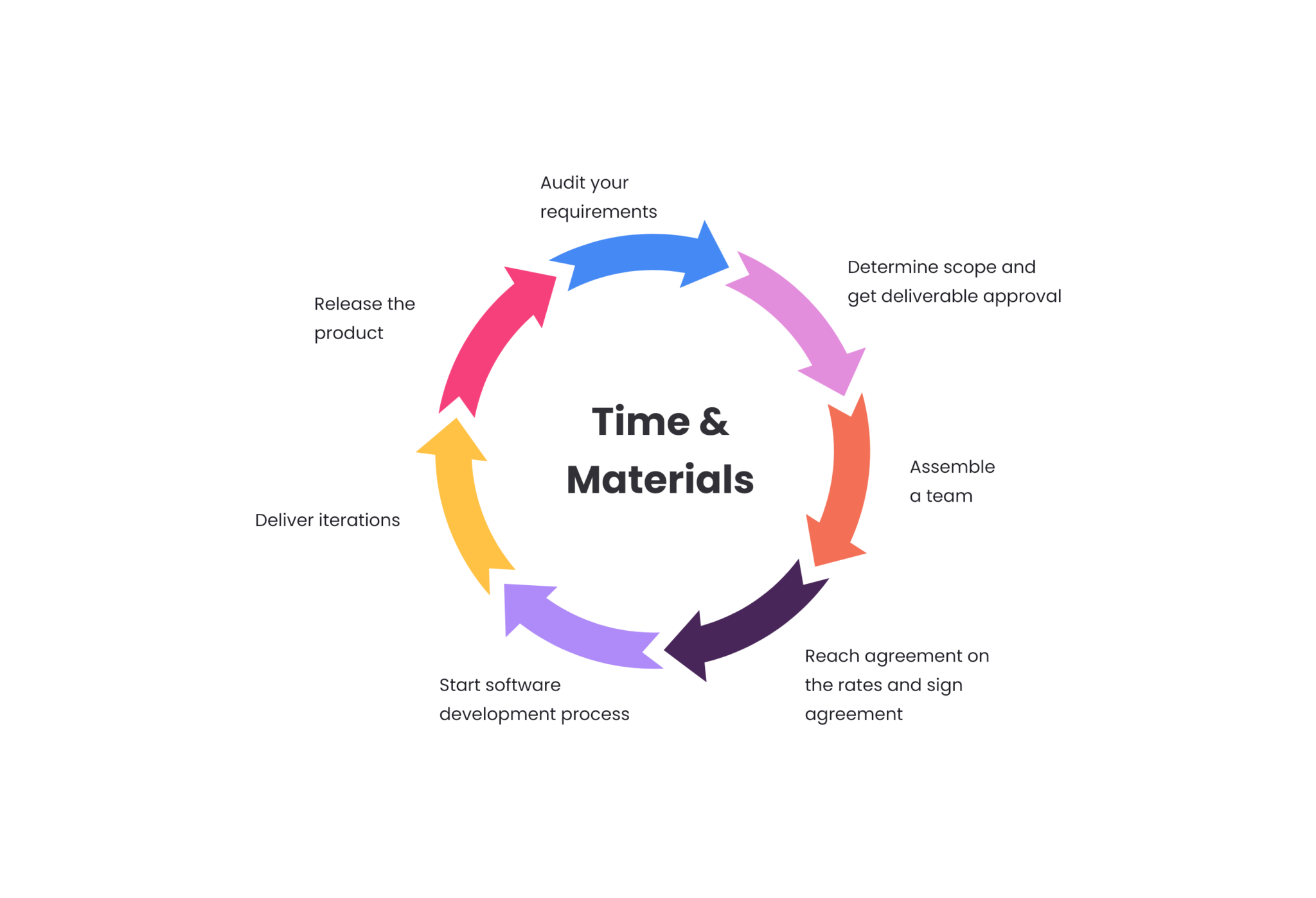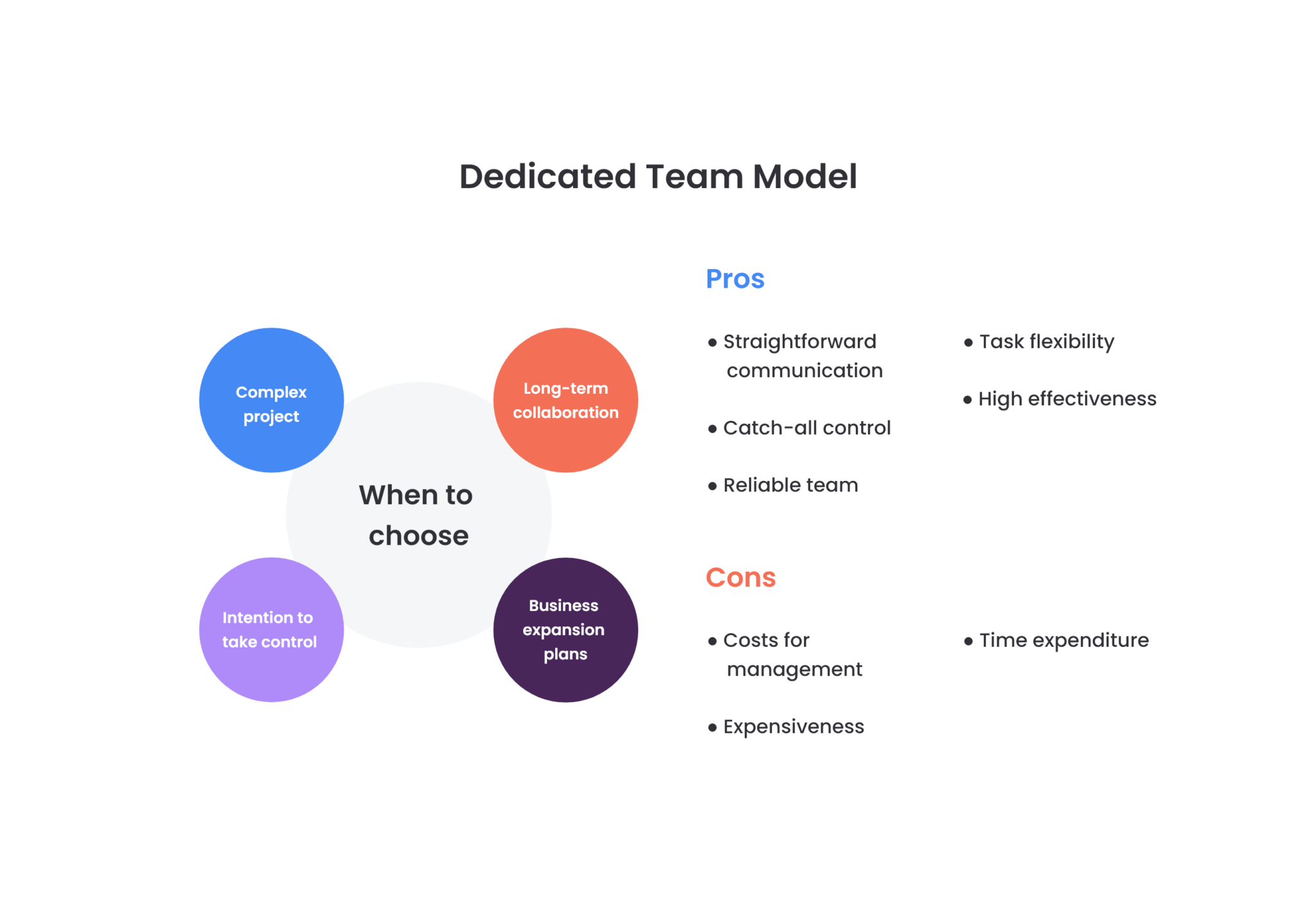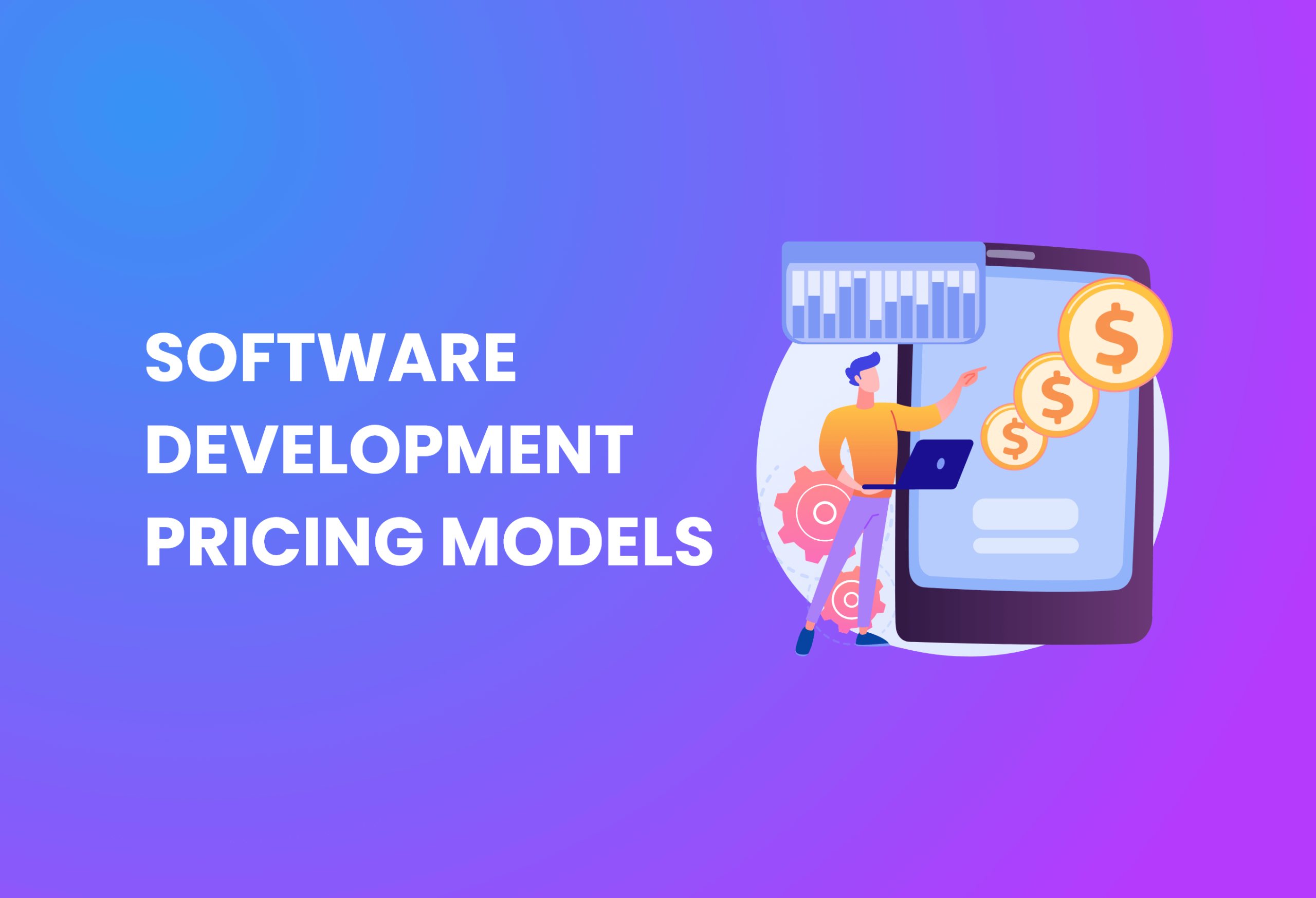It takes more than simply writing code to build a new piece of software. Architecture, requirements analysis, design creation, and testing are all steps in this process. The solution is then implemented. Businesses intending to build an application should be aware of the many software development pricing models currently available on the market to make an informed decision. That way, you’ll be able to choose the best option for your project and get the most out of your collaboration with a software development firm.
In this post, we’ll look at the three main software development pricing models, as well as their variants.
It’s worth noting that there’s a huge variety in this market, with numerous models, hybrids, and even name variations. Furthermore, in the contracts prepared by software development agencies, one model may be implemented in various ways. That is why our list is far from complete. It is, nonetheless, a valuable source of knowledge about the most commonly used software development pricing models today. And with this information, you’ll be able to make informed decisions regarding the price plan for your app development.
Software Development Pricing Models and Variants
1. Fixed-price model
Additional variants include fixed-budget, fixed-time, and fixed-scope
2. Time and material software development pricing model
An additional variant is the milestone pricing model.
3. Dedicated team
The model has three variants: offsite, onsite, and outstaffing contract.
So let’s have a look at the pros and cons of each of these software development pricing models now.
1. Fixed-priced software development pricing model
This software development pricing model adjusts the development process based on cost and time predictions based on the project parameters. The budget, specifications, and date of delivery are fixed here. Most projects have a predetermined timeline and set of goals that serve as a basis for calculating payments.
To guarantee that the project is completed on time, it is important to clearly define the scope of the work and establish milestones for completion in advance.
Such a model, on the other hand, makes risk management problematic. It is important to remember that the provider is accountable for the whole management process in this instance. Therefore, it may not be easy to monitor the project’s progress.
During development, unexpected events may occur, including:
Every time you try to change the scope of the project, you will encounter challenges. You’ll need to modify the contract and come up with new conditions to meet your needs. Your product’s time-to-market will increase as a result of this.
If the team comes up with a brilliant new product or solution that would add significant value to your business but needs more time, they may not be able to share this information with you. And that’s because under the fixed-price software development pricing model, the original plan must be adhered to.
Because the agency can’t lose money, the team will work around the clock to meet the agreed-upon scope. In this case, you might forget about better code quality and a robust quality assurance procedure. To meet a deadline, the team must provide a specific scope of work on time; if anything unexpected comes to light, the quality will suffer the most.
The above scenarios make collaboration with your software development firm difficult.
What are the possible outcomes?
-
- Because they can’t fully use their skills and expertise, the team will only work half-heartedly.
-
- Even though you’ll precisely get what you requested, it won’t be the best product you could have had.
-
- You’ll have a hard time making modifications.
-
- The team will not provide any ideas that would be beneficial.
-
- In this case, you won’t be completely satisfied with the result because of the quality of the product.
When should you use a fixed-price software development pricing model?
-
- Your project is small and has a short timeline (lasting less than two months).
-
- You don’t care about being a part of the development process or having a say in how it proceeds. You’d rather agree on everything upfront and then hand the project over to the team as a whole.
-
- If you wish to work with a new provider, you can set up a short pilot project to see how the firm performs before employing them for a major, long-term project.
-
- For your project, you’ve got all the technical specs and a well-developed strategy, as well as wireframes, user journey maps, and user stories in place, so you’re ready to get started. Naturally, it would be beneficial if you had plenty of time to prepare these papers.
-
- There is no doubt in your thoughts that the project’s requirements will not alter in the future.
What do you pay for?
So long as the fixed-price project is completed as per its initial estimates, you pay just for the amount of work agreed upon in advance.
The contract should clearly outline your and the provider’s duties, such as deliver data, feedback from testing, and quality standards. Every time you go above and beyond what was originally agreed upon, you’ll have to pay a fee.
Additional variants of the fixed-price software development pricing model include:
1. a) Fixed budget pricing model
This software development pricing model has a set budget, but the timeframe and scope of the project may be altered throughout the development process. A very limited amount of money is available for this project. Because of this, the software development company will work on building the best possible solution for this budget. Feature and scope changes are possible, but not at the expense of budget changes.
When should you use a fixed-budget software development pricing model?
-
- You are on a tight budget
-
- Because your product specs aren’t set in stone, and your project deadlines are open to constant optimization, you and your team may keep the project scope as fluid as necessary.
What do you pay for?
Regardless of the scope of the project or the delivery date, you pay the agreed-upon amount.
1. b) Fixed-time software development pricing model
It focuses on a team’s ability to provide the product on time. Project parameters like scope and budget may be adjusted, but the deadline for delivering a solution remains fixed.
When is a fixed-time model appropriate?
-
- The most important factor is time, which you estimate to be two months in most cases. Do as much as possible at that time.
-
- Getting your product out into the world quickly is something you’re after.
-
- You expect the solution to be completed within the given period.
What do you pay for?
When you hire a team, you pay for the number of hours they work on your project within the agreed-upon period.
1. c) Fixed-scope software development pricing model
The project scope is set in this model and cannot be amended throughout the project. Nevertheless, the team has some discretion under your guidance in terms of product delivery timelines and budgets.
When should you use a fixed scope pricing model?
-
- You’re looking for a specific product, and you know precisely what you want.
-
- Your team may constantly adjust both your delivery time and your budget based on your needs.
What do you pay for?
When you hire a team, you’re paying for the time it takes to complete the agreed-upon scope of work.

2. Time and material software development pricing model
The time spent on your project and the cost of the materials are accounted for in the time and material software development pricing model. Contracts like this one provide a great deal of time, scope, and financial flexibility, although early estimates have been established. Payments are paid regularly, such as once a month, for example.
The main benefit is that this software development pricing model enables you to easily adjust the requirements and change the work plan without incurring any high costs. This pricing model is an ideal fit for software development teams using current agile approaches (such as the Scrum methodology.)
Furthermore, you’ll be able to track the progress of the team during the whole development process. In this way, you have a better chance of obtaining exactly what you’ve been looking for.
When to use a time and material software development pricing model?
-
- You have a hard time figuring out the final specifications of your product at the outset.
-
- You’d want to get started on development as soon as possible.
-
- You’re hoping to have a say in how big the project will be and how much money you’ll be able to spend.
-
- In order to ensure its success, you wish to be an actively involved product owner who has a significant impact on the development of the application.
-
- Project specs and requirements are constantly evolving.
-
- You don’t have a set deadline for the project.
-
- It will take more than a stated number of months to develop your product. .
What do you pay for?
In this software development pricing model, you pay for the real time the team spends on particular tasks and the cost of everything they use to deliver your product in this pricing model (e.g., access to a specific tool).
Another variation of the time and material pricing model for software development is:
2. a) The milestone pricing model
The scope, price, and time frame of the project are all flexible and adjustable. For example, the client gets invoiced after the service provider has completed the task in a certain time frame, accomplishing an agreed-upon milestone. Good news: You have to pay for basic features and approve each milestone before work can proceed in this model.
When should you use a milestone software development pricing model?
-
- You have a solid working relationship with the service provider.
-
- There’s an established relationship with the provider that reduces both time and the risk of disputes by streamlining the acceptance process.
What do you pay for?
You pay for the development of certain features within a previously set milestone in this model. The amount directly reflects the time invested by the provider’s team in achieving a certain goal.

3. Dedicated team software development pricing model
For a dedicated team, you pay for the time the team members spend working for you. Management of your work is your responsibility. The pricing is based on the hourly rates of the specialized team’s developers. It includes the monthly wages of all employees recruited, plus additional administrative costs.
Using this software development pricing model, you have a great deal of control over the team and can manage them, such as determining the workload. You also receive the privilege to pick your team members from a list of possible candidates provided by the service provider.
This model is comparable to forming an in-house team, except that you can increase or decrease the number of team members. For one thing, you don’t have to hire people and spend money on things like vacations and workspaces for them. As a result, you can flexibly increase or decrease the size of your team over time.
What do you pay for?
For a dedicated team, the monthly salary for each employee is included, as well as additional fees for administrative purposes (called the “management fee”). Monthly payments are the standard. The contract should specify the salary and the fee. You’ll know the monthly cost of your project based on the team’s makeup.
This software development pricing model comes in three variants:
3. a) Offsite dedicated team software development pricing model
In the offsite model, the team works on the premises of the provider, and it is common for the development team to be based in another country.
When should you use an offsite dedicated team software development pricing model?
Same as the dedicated team price model, but with the addition of:
-
- You’re planning a long-term project with unclear requirements.
-
- For a large in-house project, you’re looking for a solution that doesn’t require hiring full-time employees.
-
- You’re OK with the fact that you’ll be managing the team remotely.
-
- Process management is a skill that you have, or you have a team member responsible for it.
What do you pay for?
Same as the dedicated team software development pricing model.
3. b) Onsite dedicated team pricing model
The development team collaborates closely with the rest of your in-house team members on your premises.
When to use an onsite dedicated team software development pricing model:
-
- You want to start a long-term project with unclear requirements.
-
- Your company has a large in-house project, and you’d want to boost your internal team, but you don’t want to recruit additional full-time employees.
-
- Face-to-face contact is vital to you, and you want to work with the team in the same place.
What do you pay for?
The price plan is similar to that of a dedicated team software development pricing model.
In the dedicated team models, the team may have a project manager assigned to it by the service provider. This individual will report to you or the person in charge of the project at your company. It all comes down to the terms you agree to.
3. c) Outstaffing contract pricing model
Hire a team from an outstaffing service to work on your project at either your office or the provider’s.
An outstaffing provider identifies the team members you need based on the number and qualifications of the team members you specify. Teamwork is similar to an in-house team, except that the provider takes care of administrative duties.
This software development pricing model closely resembles the dedicated team model. Here, you don’t use a software agency to find developers but rather an outstaffing provider.
Note: If you assign the duty of recruiting engineers to a software development business, the team may develop a set of methods and workflows that may be used for your project to increase team member productivity. This isn’t something you’ll often find with an outstaffing service.
When should you use an outstaffing contract software development pricing model?
-
- You’re about to embark on a major project with unclear requirements.
-
- This means that you’re prepared to manage your team and assign duties to team members.
-
- An outstaffing service may avoid the need to look for a software house; instead, you may choose to employ their services.
-
- You have a large internal project and want to strengthen your internal team to produce a great product—but you don’t want to recruit more full-time professionals.
What do you pay for?
It is no different from a dedicated team software development pricing structure.

Wrapping things up: how to choose the right pricing model for software development?
There are pros and cons to each of the pricing models mentioned. It’s up to you to make the final choice based on the requirements of both your project and your business.
These are the most important considerations:
-
- The complexity of your project
-
- How many employees would you want to get on board?
-
- Your budget?
-
- Duration of the project
-
- What level of control do you expect to have over the team?
Fixed-price models and their variants aren’t worth considering for long-term projects.
Treinetic’s Thoughts on Software Development Pricing Models
Because we mostly work on long-term projects, we often employ time and material software development pricing models. Our years of expertise in the industry have convinced us that this contract is the best option for developing mobile and web applications.
Are you looking for an award-winning team of experts that can help you get your idea off the ground? Get in touch with one of our experts now. We assist businesses like yours in determining the most appropriate software development pricing and cooperation models for their needs.

